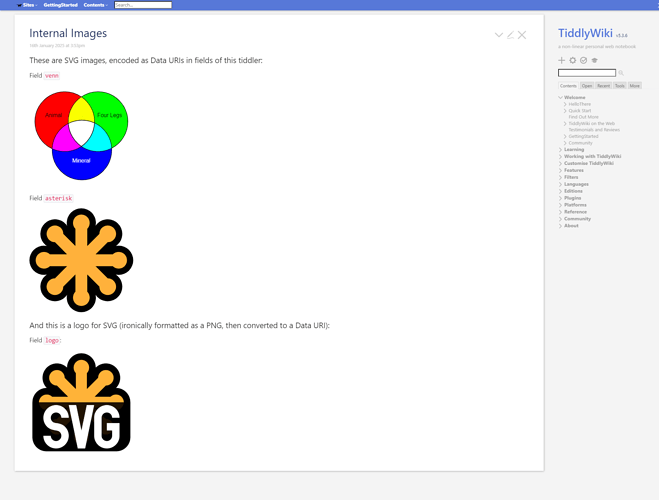I wasn’t sure if you’re aware that you can easily store image data in arbitrary fields, using data uris. And there are a plethora of tools to convert images to data uris.
This shows a single tiddler that has three images included as field data.
Internal Images.json (88.6 KB)
title: Internal Images
asterisk: data:image/svg+xml,%3Csvg%20...
logo: data:image/png;base64,iVBORw0K...
venn: data:image/svg+xml,%3C%3Fxml%2...
!! These are SVG images, encoded as Data URIs in fields of this tiddler:
!!! Field `venn`
<$image source={{!!venn}} width="300px" />
!!! Field `asterisk`
<$image source={{!!asterisk}} width="300px"/>
!! And this is a logo for SVG (ironically formatted as a PNG, then converted to a Data URI):
!!! Field `logo`:
<$image source={{!!logo}} width="300px"/>
Of course this doesn’t match your single-field-for-images. But it’s probably quite a bit more flexible, and it’s already built-in.

